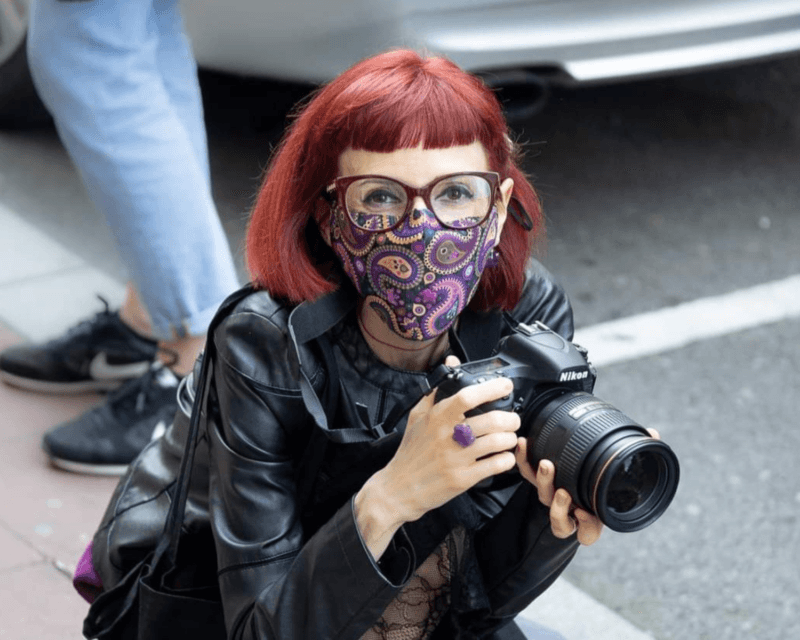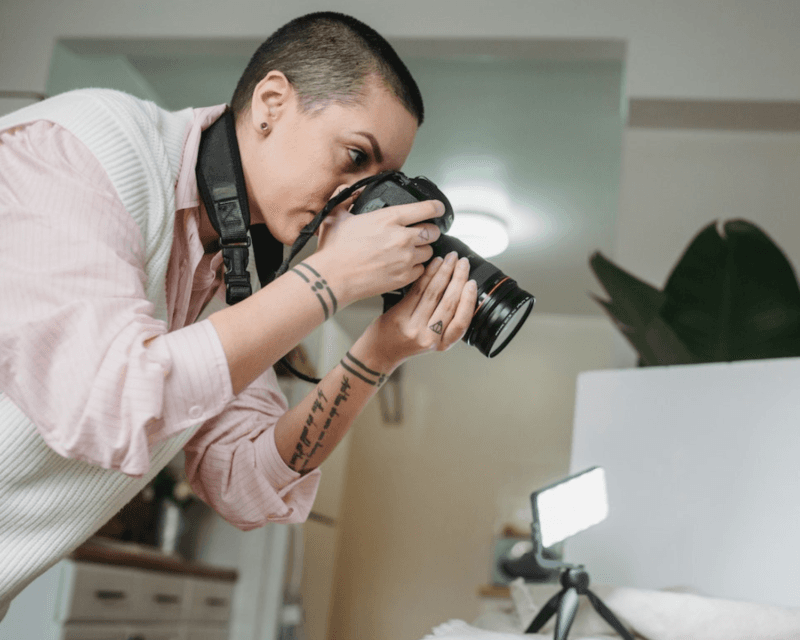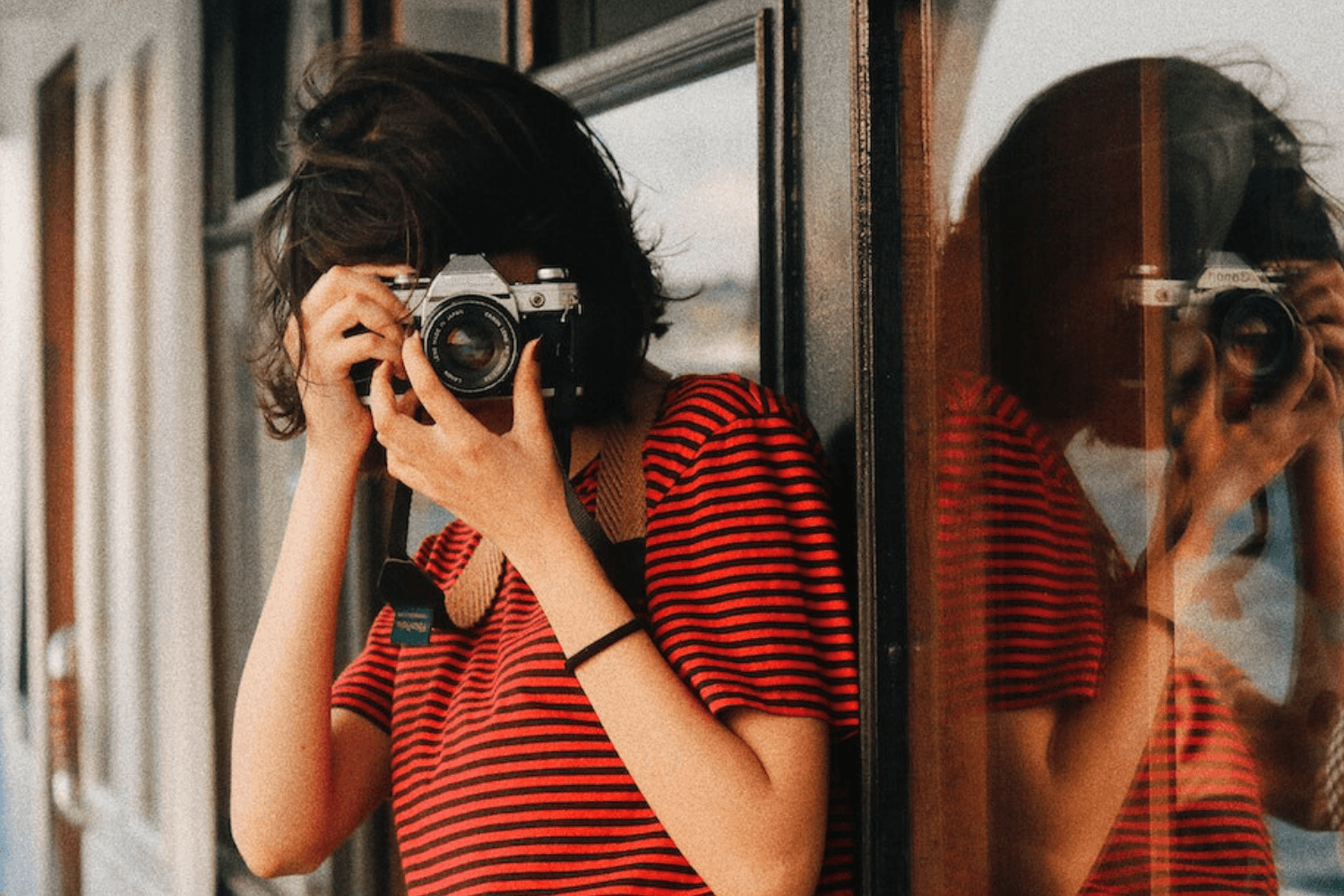11 Inspiring Women Pioneers of Photography You Need to Know
Yvan Cohen
Tue Mar 07 2023
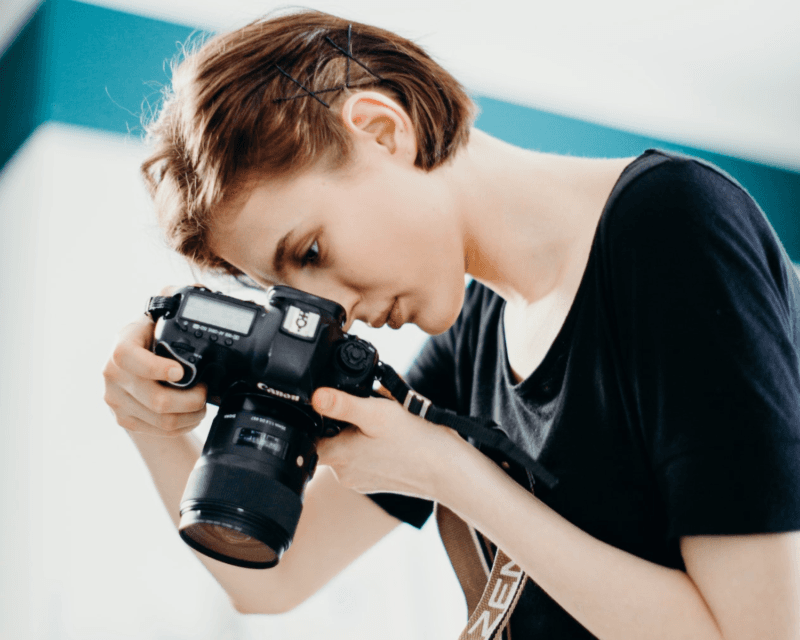
By Yvan Cohen
We tend to think – or at least to have thought – of photography as a man’s profession. The vast majority of both amateur and professional photographers, especially until recent decades, have been men. Many of the best-known photographers, names that have become icons of the art (Eugene Atget, Robert Doisneau, Henri Cartier Bresson and so on), are men.
Is there something intrinsically masculine about the photographic art? Is the the camera a machine that resonates more naturally with the male psyche? Or is this imbalance just another reflection of historic gender inequalities that have been present in almost every sphere of society?
In this article, we’ll show that these inequalities and preconceptions are unwarranted and misleading. We have selected 11 inspiring women pioneers of photography who are among the greatest photographers that ever lived. Through their unique vision, these female pioneers have helped shape and advance the art of photography.
1. Julia Margaret Cameron (British) – 1815 – 1879
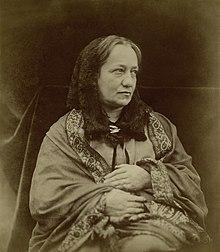 Source: Wikipedia
Source: Wikipedia
One the earliest women photographers of renown, Julia Margaret Cameron, was born into a world where women could not inherit, where they could not vote and where they rarely attained prominence and renown.
It is against this social backdrop that Julia Margaret Cameron emerged as one of the earliest women photographers to earn public acclaim. Although her work was still often criticized in condescending tones, “what…have these pictures in common with good photography?” wrote the Photographic News of her work in 1865.
And yet many of her portraits of the great literary and intellectual figures of the Victorian age (Lord Tennyson, Charles Darwin and Henry Taylor) are now hailed as outstanding examples of early fine-art photography. Cameron has been posthumously recognized as a pioneer, and is sometimes even described as one of the most significant photographers of the 19th century.
Alongside her portraits of distinguished men, Margaret Cameron’s less formal, and thus more avant-garde, portraits of young women, depicted with their hair down, are also striking for their daring and originality in an era when formal appearances and propriety were ‘de rigueur’.
2. Dorothea Lange (American) – 1895-1965
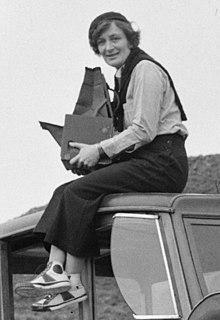 Source: Wikipedia
Source: Wikipedia
Dorothea Lange is best known for her iconic depression-era image of a poverty-stricken mother and child, known as Migrant Mother. The image has become one of the 20th century’s most memorable examples of social documentary photography, and Lange’s oeuvre is recognized as one of the most influential early examples of socially engaged photojournalism.
Originally a society portrait photographer, by 1933 Lange was so moved by the hardship and upheaval brought about by the economic depression, she began to turn her lens towards more pressing social issues.
She was one of a group of photographers commissioned by the Farm Security Administration (FSA) to document the impact of the economic crisis on rural communities. Lange’s work is characterized by a deep empathy for her subjects and by an obvious desire to be as truthful as possible in describing the reality of those she photographed. Her work became one of the first examples of photography being used not just to document but to create awareness.
In 1952, worried that photography was becoming “more concerned with illusion than reality” she wrote a powerful description of how she understood documentary photography: “That the familiar world is often unsatisfactory cannot be denied, but it is not, for all that, one that we need abandon,” she argued. “We need not be seduced into evasion of it any more than we need be appalled by it into silence.… Bad as it is, the world is potentially full of good photographs. But to be good, photographs have to be full of the world.”
Dorothea Lange saw her photography as a vehicle for telling the truth, for transforming images into agents for change; pictures that would implant themselves in the public consciousness and influence public opinion. Even today, the sorrow of her Migrant Mother is a powerful reminder of the suffering endured by the poorest in society.
3. Imogen Cunningham (American) – 1883-1976
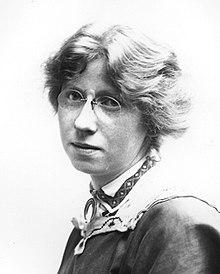 Source: Wikipedia
Source: Wikipedia
Imogen Cunningham was just eighteen when she owned her first camera, embarking on a bohemian career that was defined by both controversy and a wide-ranging exploration of photography’s creative boundaries.
Cunningham seemed to relish testing the social limits for women photographers. In 1914, she caused a minor scandal when she published nude photographs of her husband, prompting one critic at the time to label her an ‘immoral woman’.
Undeterred, Cunningham went on to create a series of nude self-portraits and later became fascinated by botanical photography – a genre considered one of the defining elements of her oeuvre.
Always evolving, Cunningham quickly gained in renown. In 1932, she joined the prestigious F/64 Group, alongside such greats as Ansel Adams, Edward Weston and William Van Dyke (there was just one other woman, Sonya Noskowiak, in the group).
“I photograph anything that is exposed to light.” Cunningham once said. Indeed, her career is a kaleidoscope of styles and experimentation ranging from nudes, still life, commissioned portraiture and street photography.
While she might not have described herself as a ‘feminist’, Cunningham was keen to promote the role of women in photography. In 1913, she even wrote a manifesto entitled “Photography as a Profession for Women”. By the 1970s, some women were already describing Cunningham as an iconic feminist artist.
4. Margaret Bourke White (American) – 1904-1971
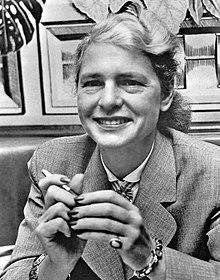 Source: Wikipedia
Source: Wikipedia
Margaret Bourke White enjoyed a career punctuated by firsts. In 1930, she became the first Western photographer allowed access to the Soviet Union and later went on to become the first female staff photographer for Life Magazine.
Unusually, Bourke-White began her career in industrial and architectural photography – a field that was considered very much a male domain. The harshness of the industrial environment and the demands of handling heavy equipment were generally considered too difficult for a woman to undertake. “To me… industrial forms were all the more beautiful because they were never designed to be beautiful,” wrote Bourke-White.
It is for her achievements in the field of photojournalism, however, that Margaret Bourke is surely best known.
In World War II, she became the first ever female war correspondent, a tradition that has since flourished. She went on to photograph the Korean War for Life Magazine and is also famous for her images of partition in India and of Mahatma Gandhi, who she photographed just a few hours before his assassination in 1948. She had a journalist’s knack for being in the right place at the right time.
Bourke-White infused her photographic career with glamour and derring-do, becoming living proof that anything male photographers could do, a woman photographer could do just as well, if not better.
5. Diane Arbus (American) – 1923-1971
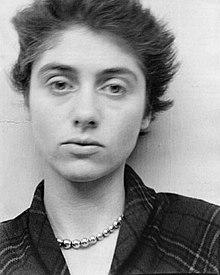 Source: Wikipedia
Source: Wikipedia
Diane Arbus may be seen as a direct successor to the documentary tradition of Dorothea Lange. Like Lange, her work placed an emphasis on photographing people in their natural context, seeking to show the reality of her subjects’ lives.
Unlike Lange, however, Arbus used her photography less as a vehicle to highlight the need for social and economic change and more as a means of illuminating the lives of those whose identity placed them at the margins of society. She became known as the photographer ‘of freaks’. Indeed, her work may perhaps be seen as a pre-cursor to that of Nan Goldin, who is also among our women pioneers.
Born into a wealthy New York family, Arbus initially worked as a commercial photographer alongside her husband Allan Arbus. By her early 30s, Arbus began exploring the possibilities of photography as a more personal form of expression. Some have speculated her interest in the marginalized was a reaction against her privileged upbringing.
Prone to depression, Arbus tragically took her own life in 1971 aged just 48. A year later she became the first photographer to have their work included in the Venice Biennale. A powerful influence on a whole generation of photographers (Mary Ellen Mark is also seen as something of an heir to the Arbus tradition), Arbus’s work is almost as controversial as it is influential. She once said her pictures sought to capture “the space between who someone is and who they think they are.”
6. Vivian Maier (American) – 1926-2009
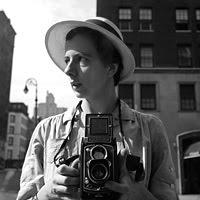 Source: Wikipedia
Source: Wikipedia
Vivian Maier is an anomaly among our women pioneers in that she was completely unknown as a photographer during her life. Her oeuvre was famously discovered in 2007, when a large volume of her work held in storage was put up for auction.
Collector John Maloof purchased most of her work and was instrumental in bringing it to the attention of the public, co-directing the acclaimed documentary “Finding Vivian Maier”. Sadly, it was only in 2009, the year of Maier’s death, that interest in her work, and recognition of her talent, went viral.
The daughter of French immigrants, Maier lived in relative poverty, working for most of her life as a nanny in Chicago. She appears to photographed feverishly throughout her adult life and with great dedication, producing around a hundred and fifty thousand images, many of which (20-30,000) were still undeveloped at her death.
She is seen as a street photographer par excellence, in the tradition of Diane Arbus, Mary Ellen Mark and Robert Frank. And yet she is attributed with developing a unique aesthetic and visual style. Clearly a complex character, strange even, Maier has captured the collective imagination as much for the impressive quality and range of her work as for the mystery that surrounds her.
7. Mary Ellen Mark (American) – 1940-2015
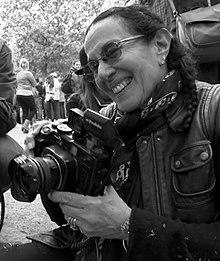 Source: Wikipedia
Source: Wikipedia
Although she first picked up a camera aged just eight years old, Mary Ellen Mark learned her craft as a photojournalist in the turbulence of the mid 1960s, documenting anti-war demonstrations in New York.
Like Diane Arbus and Dorothea Lange, Mark was drawn to those on the margins of society. “I have an affinity for people who haven’t had the best breaks in society. What I want to do more than anything is acknowledge their existence,” she once said. Her images of twins are clearly heirs to the work of Arbus, and like Arbus she was often drawn to freakish fringes of humanity. At times, her work appears nightmarishly surreal with an almost Fellini-esque quality.
Mark, who considered herself a ‘street photographer’, was always able to get close to her subjects, who are often looking directly at the camera. One senses she is simultaneously removed and yet intimately engaged – a powerful tension which inhabits much of the best documentary photography.
Perhaps more than anything, Mark is known for her ability to move fearlessly in other people’s worlds, to tell powerful visual stories and yet depict her subjects with empathy and compassion. Celebrated National Geographic photographer Maggie Steber said of Mark’s work that ‘she could make you care about other people’.
8. Judith Joy Ross (American) – 1946 –
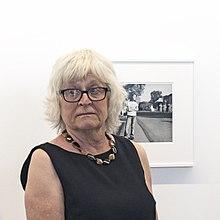 Source: Wikipedia
Source: Wikipedia
There is a beguiling simplicity to Judith Roy Ross’s oeuvre, an almost-quietness to her images that belies the strength of her vision and the power of her talent.
Ross says she started out her career struggling to gather the courage to approach people to take a picture. Once she had broken through that barrier of shyness, however, she embarked on a photographic journey characterized by nuance and sensitivity.
Straight-on, formal-looking portraits define Ross’s style. Hers is an uncompromising approach. Her portraits are often pared down, uncluttered by context, leaving the viewer confronted by the piercing, unflinching essence of her subject’s humanity.
Unlike Mary Ellen Mark and Diane Arbus who worked on the fringes of society, Joy Ross was drawn to the mainstream. “I’m looking,” she said, “for people like me”. Much of the formal quality of her portraiture is perhaps derived from the fact she worked with an 8×10 inch plate camera, transforming her photography into a relatively rigid and deliberate process, a stark contrast to the fluid street work of Arbus, Mark and Lange (who used mainly 35mm cameras).
Though critics have occasionally complained her work lacks diversity, the consistency of style and format in Ross’s portraiture has nevertheless defined her vision, creating a signature look that she is continually refining.
The quiet confidence of Ross’s eye and her unbending faithfulness to her personal vision, have created a surprising, and illuminating, body of work that has earned her a unique place among the pioneer women of photography.
9. Annie Leibovitz (American) – 1949 –
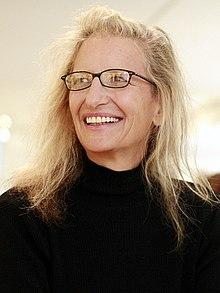 Source: Wikipedia
Source: Wikipedia
Annie Liebovitz is perhaps the best-known and most iconic among our women pioneers. Her name has become synonymous with some of the most flamboyant, creative and iconic images of our age.
Celebrity portraiture and fashion are the defining pillars of Liebovitz’s oeuvre. In the 1970s, she launched her career working for Rolling Stone magazine, and went on to work regularly for such giants as Vogue and Vanity Fair.
It sometimes feels as though anybody who is anybody has struck a pose in front of Liebovitz’s lens. She famously photographed Yoko Ono and John Lennon just a few hours before Lennon’s assassination and documented the Rolling Stones at the height of their glory days in the early 70s.
Film stars, fashion icons and politicians have all been portrayed by Liebovitz, whose signature style seamlessly blends a classical understanding of lighting and composition with an ever-evolving flair for reflecting contemporary trends; elements that make Liebovitz’s work both timeless and of-the-moment.
Her career has been as turbulent as it has been glamourous. Aside from the more predictable controversies that have surrounded some of her images, Liebovitz has also experienced financial troubles which have brought her to the brink of bankruptcy.
At the heart of Annie Liebovitz’s life, however, lies her indisputable talent, formidable energy and tireless creativity, qualities that prompted the Library of Congress to declare her ‘a living legend’.
10. Nan Goldin (American) – 1953 –
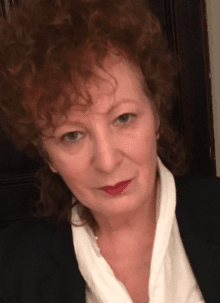 Source: Wikipedia
Source: Wikipedia
Artist, activist, social documentarian and punk photographer, Nan Goldin blossomed in the bohemian and avant-garde universe of 1980s New York.
Like Mark and Arbus before her, Goldin found inspiration and motivation for her photographic oeuvre on the fringes of society. Her early work delved into the gay and transgender scene in Boston and New York, providing an insider’s perspective on an expression of human sexuality and gender that was still taboo at that time.
Traumatised by the suicide of her sister when Goldin was just 11 years old, Goldin left home in her early teens. She quickly found herself immersed in the vortex of the East Coast art scene; a turbulent world of sex, drugs, addiction, rock and roll and eventually AIDS.
Goldin has used her renown to condemn sexual prejudice and fight against the drug companies she blames for America’s opioid crisis. She has also been criticized for transforming the most intimate aspects of her friend’s lives into a voyeuristic spectacle for the viewers of her images.
Whatever one thinks, there is something uniquely intimate and personal about Nan Goldin’s work. Unlike a documentary photographer telling a story, Goldin describes the lives of her friends and family, the people she most loved and respected (many of whom were transgender). Exploitative or not (I don’t believe that was her intention), Goldin’s work has helped change the way we see sexuality. She has broken down barriers of prejudice by being open and honest about her own bi-sexuality and her deep respect for members of the LGBTQ community.
11. Cindy Sherman – 1954 –
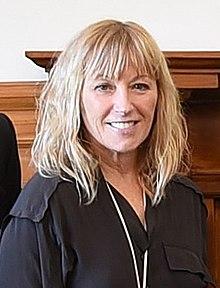 Source: Wikipedia
Source: Wikipedia
Cindy Sherman is perhaps an odd choice among our women pioneers. Of all the photographers in our list, Sherman stands out as the only photographer whose work has no documentary element to it, her work is instead defined by its conceptual approach.
Having started her career as a painter, Sherman eventually turned to photography as a way of expanding her artistic vision.
She used her camera not to describe the world around her but to explore popular culture and the stereotypes applied to female identity. Her chosen medium of expression is a series of carefully art-directed and highly-stylised self-portraits.
Sherman’s ground breaking body of work, Untitled Film Stills (1977-1980), features a collection of photographs where she portrays herself as Bß-movie and film-noir actresses.
Sherman uses photography to play with our understanding of reality and identity. Many of her self-portraits have an unsettling, almost grotesque, quality to them. As the viewer, we are confused as to what is real and what is fabrication. The artist is present and yet she has disappeared behind a confected façade. The frontiers between reality, fiction and identity are blurred.
Considered by many to be a truly feminist artist, Sherman prompts us to consider how women are objectified by society and how make-up and fashion are used to create visual stereotypes. She is also very much a photographer-artist pioneer, using digital manipulation, appropriation and selfie culture to push forward the boundaries of her work.
Written by Yvan Cohen | Yvan has been a photojournalist for over 30 years. He’s a co-founder of LightRocket and continues to shoot photo and video projects around South East Asia.
Cover image by Cottonbro Studio
To read more helpful articles on photography, check out our blog page.
Join our growing photographer community at LightRocket and get powerful archive management and website building tools for free!
